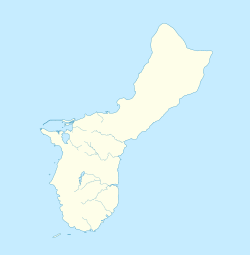Umatac Outdoor Library | |
 Chamorro people at the Library, ca. 1944-1947 | |
| Location | GU 4, Umatac, Guam |
|---|---|
| Coordinates | 13°17′59″N144°39′38″E / 13.29972°N 144.66056°E |
| Area | less than one acre |
| Built | 1933 |
| Built by | Francisco Quinata Sanchez and Umatac villagers |
| NRHP reference No. | 99001301 [1] |
| Added to NRHP | November 12, 1999 |
The Umatac Outdoor Library, located on Guam Highway 4 in Umatac, Guam, was built in 1933 by Francisco Quinata Sanchez and Umatac villagers. It was listed on the National Register of Historic Places in 1999. [1] [2]

